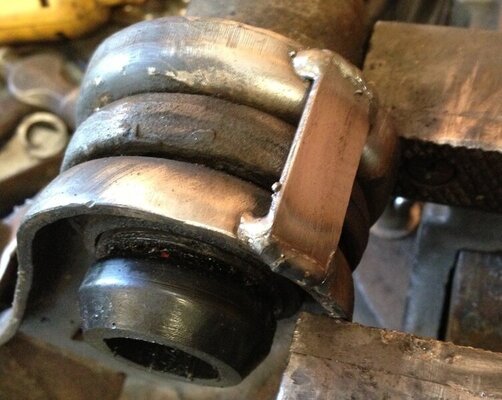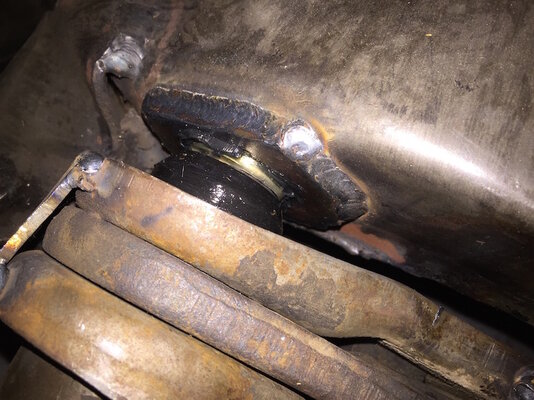lower control arm 1972 Duster
@Jim Lusk ’s video covers it pretty well. I clamp the end with the pivot lever together before I weld the boxing plate on the bottom, and then in addition to the boxing plate I add a strap to that end. You want to limit the play, but don’t make it so tight that there’s resistance between the pivot lever and the LCA.


Now, as for the play itself. When suspension is fully assembled and the LCA is loaded, the LCA, pivot lever and pivot all move up and down together, twisting the torsion bar hex end. And the ball joint end of the LCA is constrained by the strut rod.
Under most driving conditions having some slop between the pivot lever/pivot and LCA isn’t likely to be much of an issue, they’re all going to move together. Which is why the factory wasn’t too worried about that slop. I haven’t rebuilt as many LCA’s as Jim by a long shot but pretty much all of them have that play in them.
But under more extreme conditions, you’re going to put more load into the LCA and having that slop there is an opportunity for there to be flex and movement, and if the ball joint moves around the alignment changes and the handling will feel sloppy.
So, the usual “it depends”. If you’re keeping all of the factory rubber bushings, especially at the strut rod, then the movement there will allow the LCA to flex and move quite a bit, which makes the flex in the arm less important. The rubber bushings will give before the loaded LCA will flex.
But if you’re going adjustable strut rods, poly/delrin LCA bushings, wider softer tires etc then removing that flex and slop in the LCA is important.
@Jim Lusk ’s video covers it pretty well. I clamp the end with the pivot lever together before I weld the boxing plate on the bottom, and then in addition to the boxing plate I add a strap to that end. You want to limit the play, but don’t make it so tight that there’s resistance between the pivot lever and the LCA.


Now, as for the play itself. When suspension is fully assembled and the LCA is loaded, the LCA, pivot lever and pivot all move up and down together, twisting the torsion bar hex end. And the ball joint end of the LCA is constrained by the strut rod.
Under most driving conditions having some slop between the pivot lever/pivot and LCA isn’t likely to be much of an issue, they’re all going to move together. Which is why the factory wasn’t too worried about that slop. I haven’t rebuilt as many LCA’s as Jim by a long shot but pretty much all of them have that play in them.
But under more extreme conditions, you’re going to put more load into the LCA and having that slop there is an opportunity for there to be flex and movement, and if the ball joint moves around the alignment changes and the handling will feel sloppy.
So, the usual “it depends”. If you’re keeping all of the factory rubber bushings, especially at the strut rod, then the movement there will allow the LCA to flex and move quite a bit, which makes the flex in the arm less important. The rubber bushings will give before the loaded LCA will flex.
But if you’re going adjustable strut rods, poly/delrin LCA bushings, wider softer tires etc then removing that flex and slop in the LCA is important.